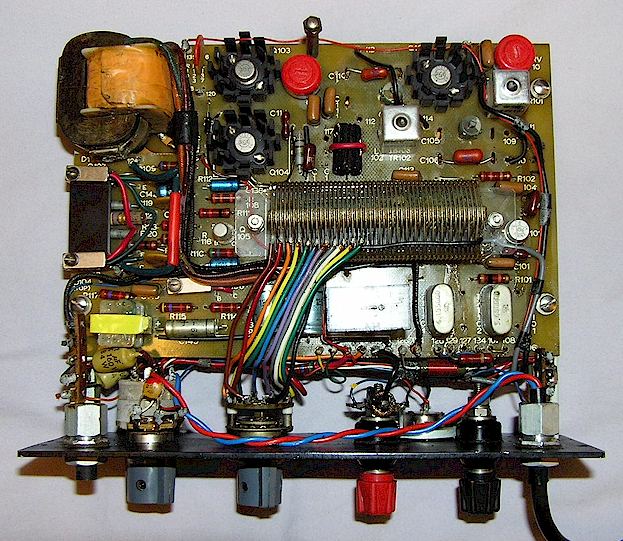
AWA
Teleradio 3 HF Pack Radio
This is a brief description of the AWA New Zealand Teleradio 3, a 1960's portable high frequency AM radio transceiver made for use by emergency services in New Zealand and surrounding countries.
AWA, short for Amalgamated Wireless Australasia, was one of the major manufacturers of military and civilian communications equipment in Australia by 1950, if not the largest. There are several other websites documenting the many products produced by AWA from the Second World War through the 1960's.
AWA's New Zealand branch created the Teleradio series of portable high frequency transmitter-receivers in the 1960's for use by rescue, police and other agencies needing a long distance method of communications which was easy to set up and low in cost. The term "Teleradio" is a bit confusing because the Australian AWA had used it to describe their line of semi-portable 1940-era high frequency radios later used by coast watchers during wartime.
Shown below is the Teleradio 3. This is an all solid state single frequency set which gets it power from the separate "D" cell battery box. There is no internal speaker, this is provided by the combination speaker-microphone sourced from the United Kingdom and also seen on assorted portable equipment made by the British firm PYE. The circuit boards have room for a second channel, although only one is fitted in this example.
The receiver makes use of a variety of parts sources and there is some variation among serial number ranges. For example, the receiver filter is a Toko ceramic filter in some sets and a cylindrical mechanical filter by Clevite in others.
This equipment made use of what is now called NVIS, or Near Vertical Incident Skywave propagation, to achieve ranges in the 30-300 mile range, by having a radiation pattern of quite a high angle. The example in this photo is tuned to 5680 kHz, which is still used as a long distance search and rescue frequency in New Zealand.
Originally, this transceiver would have been supplied in a canvas carrying case with the antenna and perhaps a spare set of batteries. Operation consisted of erecting the antenna, adjusting the transmitter for maximum power out, and communicating. The radio has a rubber-like gasket between the front panel and the case, and is nominally weatherproof. The control shafts are not gasketed or otherwise protected, and thus the word "nominally" is used.
Receiver performance is surprisingly good with plenty of gain. The receiver is capable of hearing a 1 microvolt signal and there is plenty of volume available from the hand-held speaker-mike, which was a surprise. Note the rather amusing drawing of the stick-figure men in the instructions printed on the side of the case.
I'm contemplating changing the crystals in this set to 3870 kHz and using it on the California AM frequency.

Note the almost comical instructions for erecting the antenna, printed on the side of the case:

The other side:

The speaker microphone:




The TR-3 was later superseded by an SSB version which looks similar, the TR-105.
Contact me if you need a schematic for the TR-3 or the wiring diagram of the speaker-microphone.
Ver. 5/17/2013 ęGeoffrey C. Fors, 2009, All rights reserved